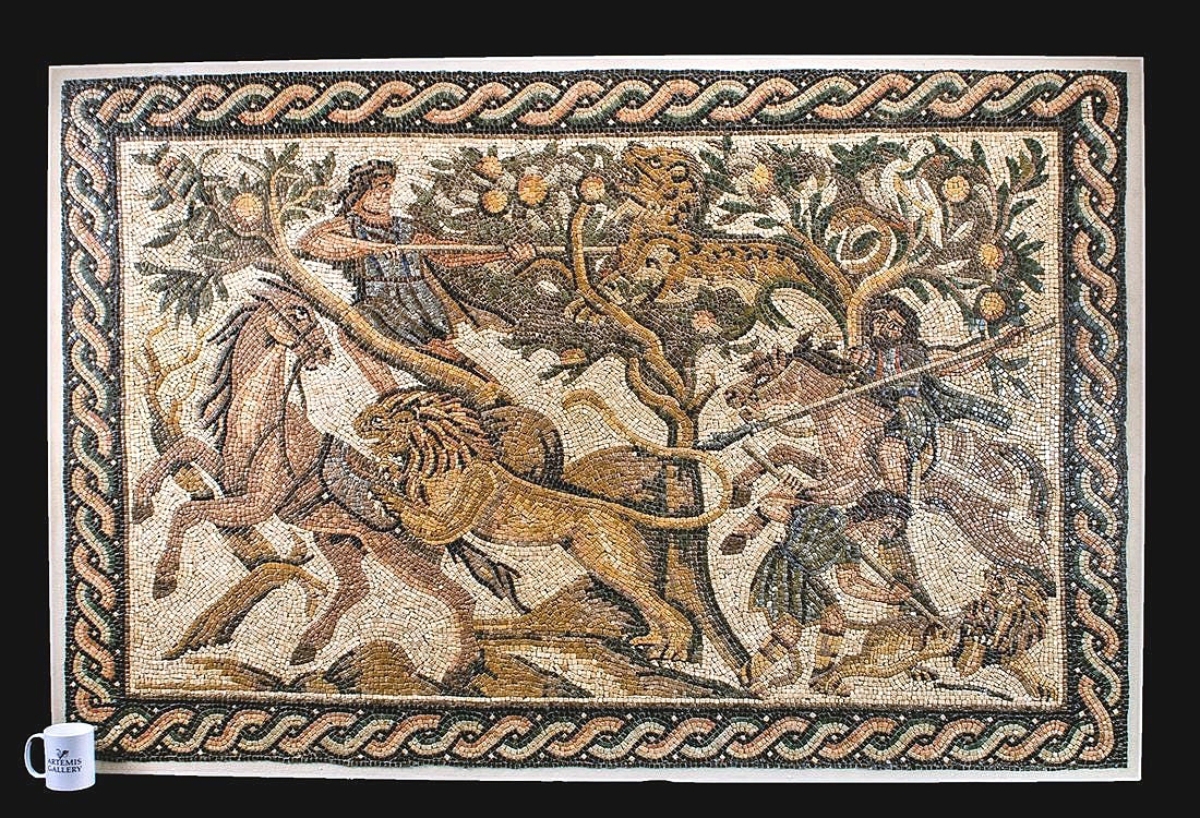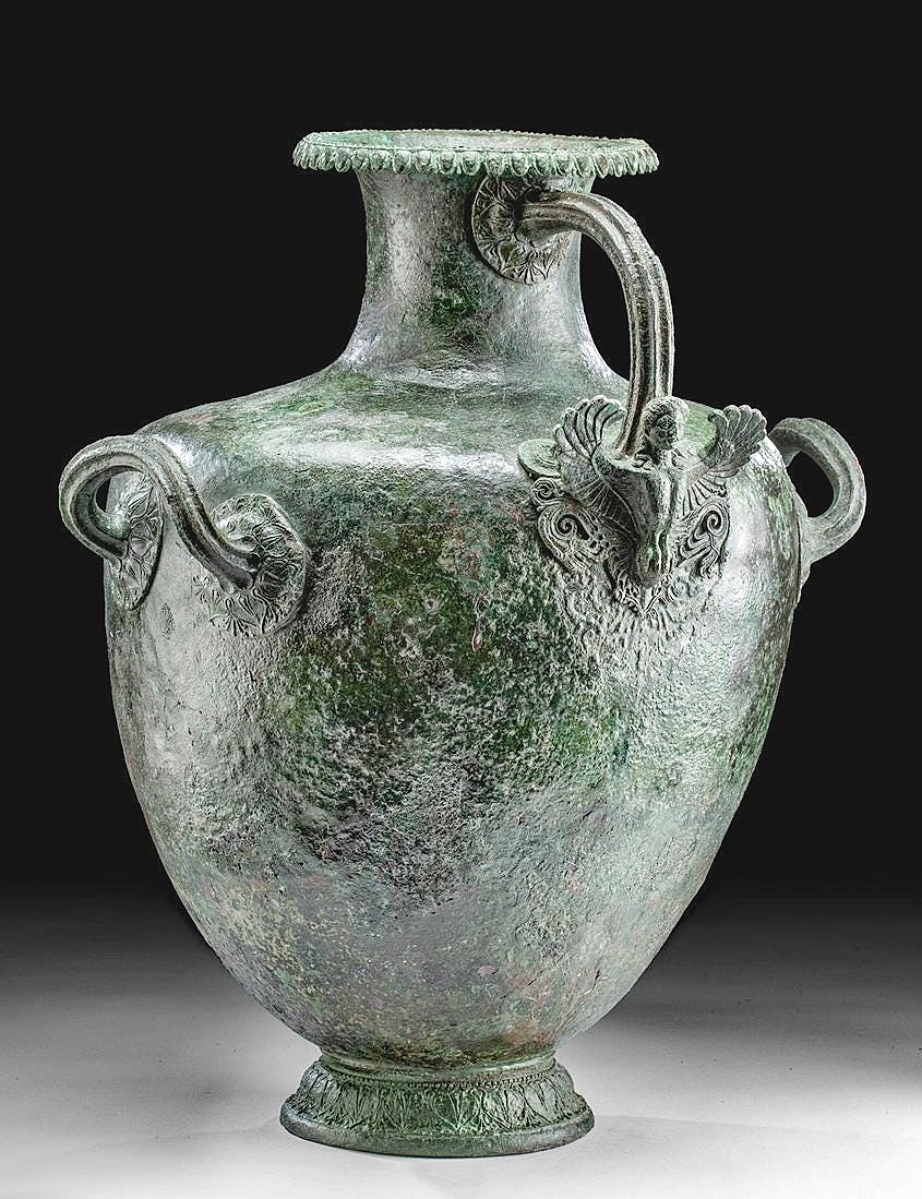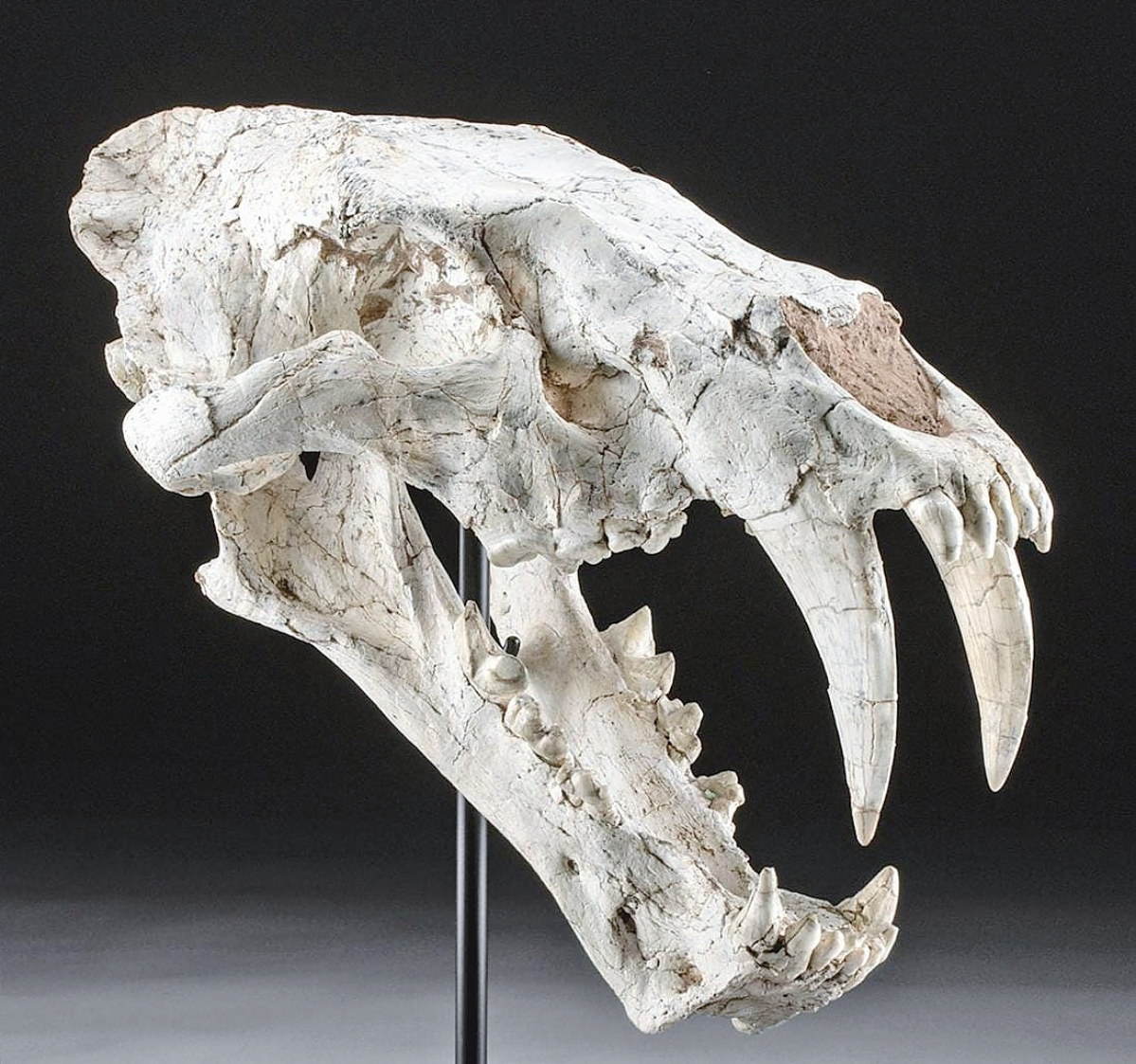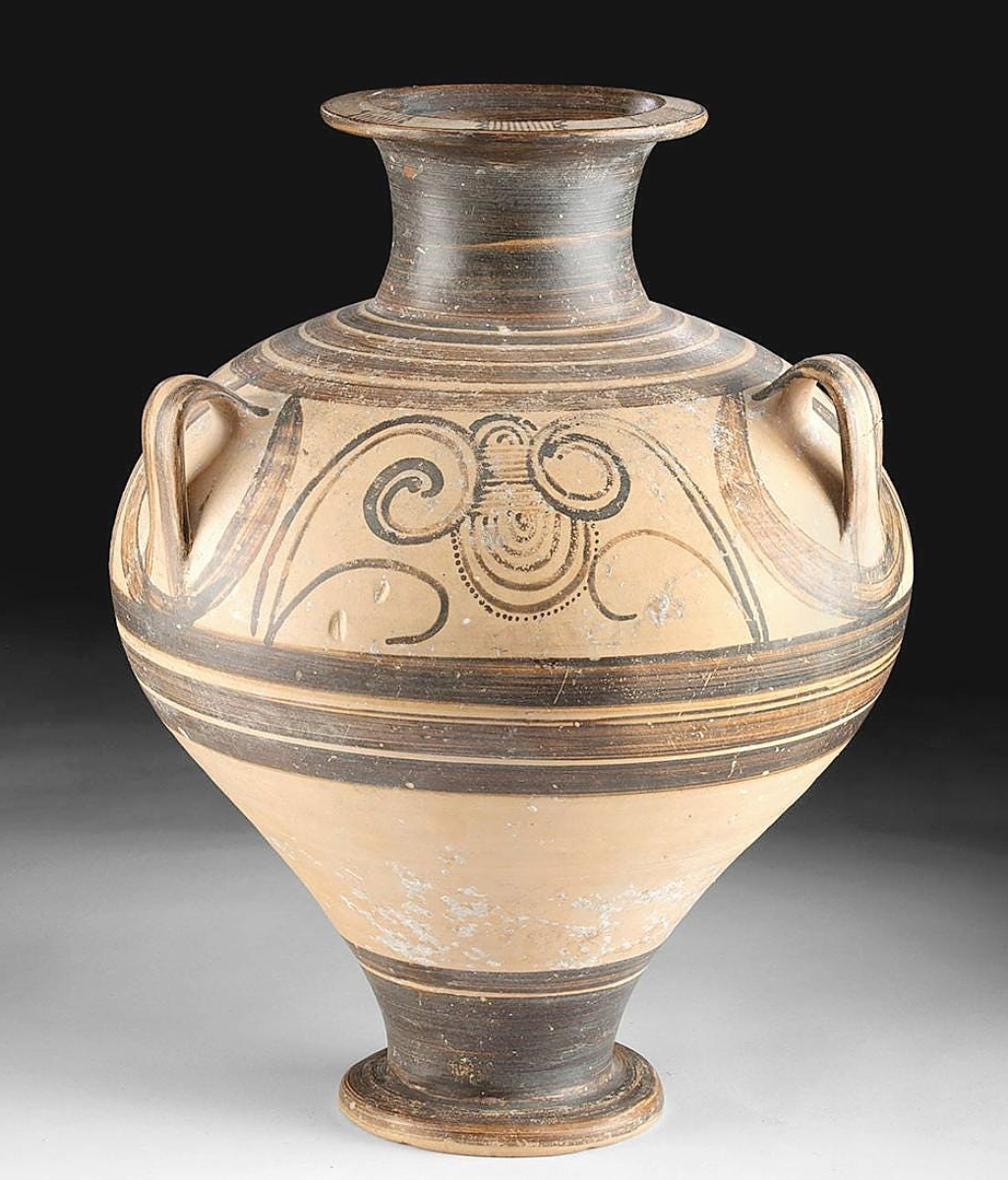
The sale’s top lot was a Roman mosaic that sold for $118,275. It measured 48½ by 74 inches and featured a scene of hunters about to spear two lions and a tiger. Noting its intricately small and detailed tessera, Bob Dodge said, “Everything about that work was a masterpiece.”
Review by Greg Smith, Photos Courtesy Artemis Gallery
LOUISVILLE, COLO. – The 357-lot Exceptional Antiquities, Asian, Ethnographic auction at Artemis Gallery wrapped at just over $1 million, owner and executive director Teresa Dodge said.
“We’re adding more variety to our stable of things we’re known for,” she said, referring to both the natural historical fossils and Native American artifacts that were included in this sale. The crossover interest for these works seems to belie a natural strength of image that these objects all share as they span periods across time.
The sale was led by a $118,275 result for a Roman mosaic measuring 48½ by 74 inches. Dating to the Imperial period, the First to Third Century CE, it depicted a dramatic scene with three hunters in the throes of spearing two lions and a tiger.
“What’s special about this is the size of the tesserae,” founder and executive director Bob Dodge said. “The smaller the size, the finer the artwork and generally the earlier the period. The design is beautiful and well-balanced. Everything about that work was a masterpiece.”

The Dodges pointed out the rarity of the siren-form handle on this Greek bronze hydria. This piece dated to the mid-Fifth Century BCE and was likely used in a funerary setting. It brought $51,668.
The firm noted that collectors of mosaics do not always leave them as wall hangings, instead they work them into the architecture of their homes. “We’ve seen clients work them into tables or even the backsplash in their kitchen,” Teresa Dodge said.
Another Roman mosaic in the sale, this one a later example dating to the Sixth Century CE, went out at $19,920. It featured a seven-lamp menorah together with a lulav, a frond of a date palm tree used during Sukkot, and a shofar, a ram’s horn trumpet associated with ceremonies and battles and used today during Rosh Hashanah and Yom Kippur.
The subject matter is what made that one so attractive,” Bob Dodge said. “There were a number of collectors of Judaica and we had two or three bidders that were very interested in it.”
On things that the auctioneers don’t see often, the Dodges noted the siren-form handle on a Greek bronze hydria from the mid-Fifth Century. The 19-inch-high example featured some repairs but it went out at $51,668. The firm noted that scholars posit the bronze hydria were not intended to be utilitarian, but instead used solely for funerary practices.

The auction house noted that this Sabertooth Machairodus Cat skull, at 14 inches long, was one of the largest ever offered at auction. The skull dated to the late Miocene Kalmakpai, approximately 15 to two million years ago. It brought a solid $37,750.
Three fossilized sabertooth cat skulls were offered in the sale, a category Bob Dodge was pleased with. “We’ve handled one or two, but this was the first time we handled three in the same auction. Sabertooth cats are so desirable. It’s the quintessential tarpit animal.” A Sabertooth Machairodus Cat skull found in eastern Kazakhstan from the late Miocene Kalmakpai, approximately 15 to two million years ago, measured 14 inches long and sold for $37,350. This type of saber cat was among the largest to have ever walked the earth and could reach lengths up to 18 feet long. A Sabertooth Dinictis skull found in the White River Formation in Shannon County, South Dakota, dated to the late Eocene to Early Miocene, approximately 37.2 to 20.4 million years ago. It was smaller, measuring 6 inches long, and brought $14,940.
Still on fossils was a late Cretaceous Mosasaur skull that measured 17¼ inches long and brought $10,583. It dated from 80 to 70 million years ago. A cave bear skull found in France dated to the Pleistocene, 300,000 to 24,000 years ago, and brought $9,960.
From the Nayarit culture of West Mexico, circa 100 BCE to 250 CE, came a pottery seated male at $14,940. The nearly nude figure with loin cloth was seated with legs crossed, hands to knees and a paunch belly. These figures were noted for their painted ornamentation and this one featured red tattooing on his shoulder, biceps, neck and face. Taking $12,450 was a Panamanian gold frog pendant, circa 800-1200, executed in 15K yellow gold. The auction house noted “This frog pendant is not only impressive for its precious goldwork and artistry, but also deeply symbolic as frogs signified seasonal rainfalls as well as fertility. Snake/serpents provide a fascinating element of Pre-Columbian iconography, as they were regarded to be a beneficial source of nourishment and at the same time quite deadly with their poisonous venom. Also important to the indigenous was the fact that snakes shed their skin annually thus rejuvenating themselves and serving as symbols of renewal and good health. The existence of two snake heads on this piece may suggest the bicephalic serpent which was a signifier of high rank in various Pre-Columbian world views.”

This terracotta amphora was Mycenaean, dating circa the Fourteenth Century BCE. The 12½ inch high example brought $29,818.
“Viking as a category is still gaining steam,” Teresa Dodge said. “We have been selling a lot of it. One of the things that’s making it easier for us is our own testing and authenticating lab. We test all the metals to make sure the composition is correct for the time period. In this category, there are so many sellers selling suspect things. Ours is of the period, guaranteed, and we have a solid group of buyers who are buying what we put up.”
Among the Viking material was a 21K gold pendant with cabochon garnets that dated to the Eighth to Tenth Century CE. It brought $10,583, the auction house noting that it likely came from the easternmost reaches of Viking territory in present day western Russia or eastern Europe. A pair of silver spurs with a bird head spike from the same period brought $11,205.
All prices include buyer’s premium as reported by the auction house. For more information, www.artemisgallery.com or 720-890-7700.























